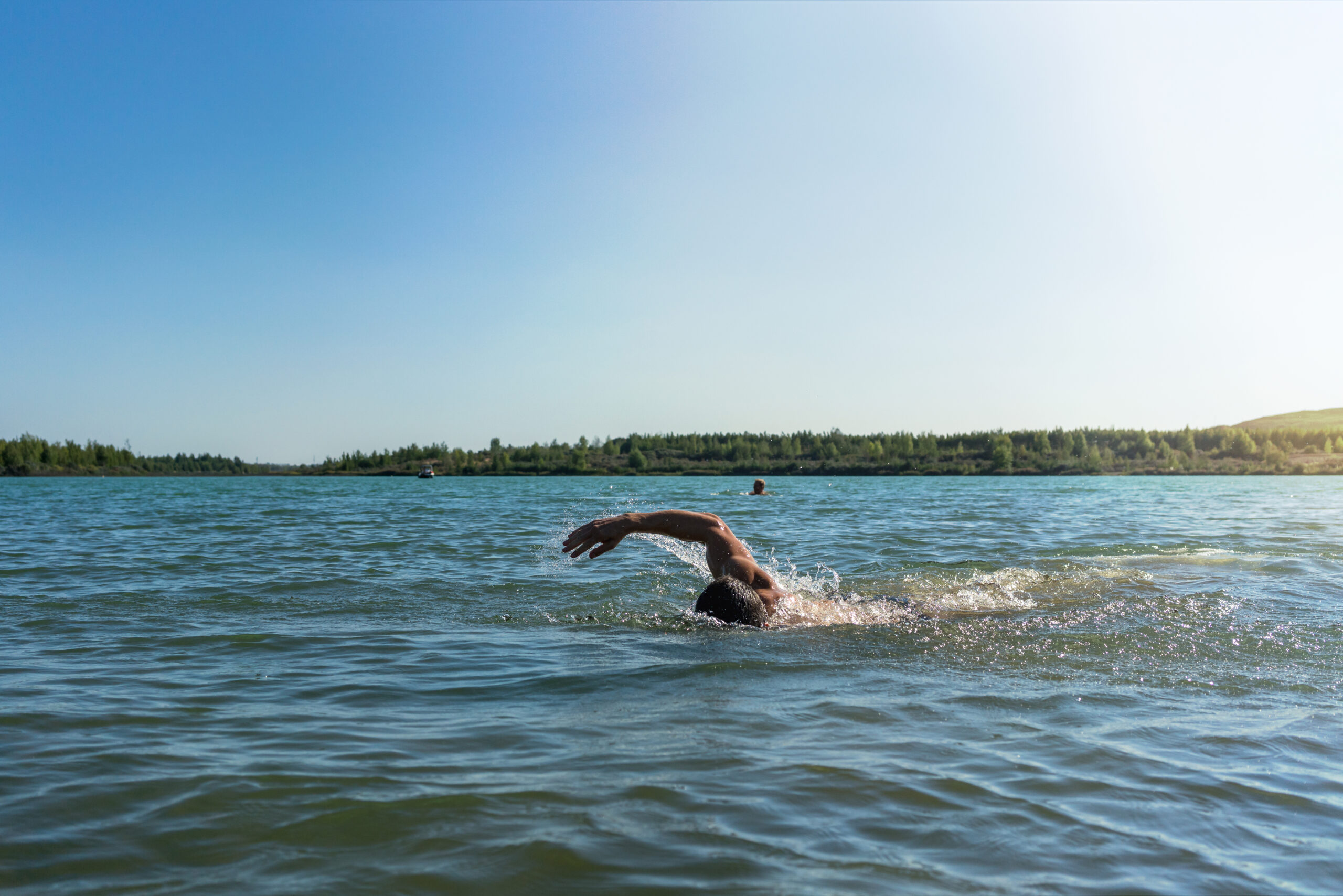There are approximately 80 types of sleep disorders, and the number of people affected globally is increasing. Sleep apnoea is considered a major sleep disorder that affects over 100 million people worldwide.
Breathing is an involuntary function regulated by the autonomic nervous system. Many of us pay very little attention to the inner workings of our respiratory systems until something changes, and issues can be missed — especially if we’re not awake to notice. A diagnosis of sleep apnoea can be frightening to those experiencing it and their loved ones. However, sleep apnoea can be managed and treated.
01 WHAT IS SLEEP APNOEA?
Sleep apnoea is a serious sleep disorder in which breathing repeatedly starts and stops. Those with sleep apnoea have multiple extended pauses (usually 10 seconds or more) and breathing abnormalities when they sleep. Breathing irregularity during rest can cause low-quality sleep and affect the oxygen supply to the body. Those with untreated sleep apnoea stop breathing repeatedly throughout sleep, sometimes hundreds of times during the night. Leaving sleep apnoea untreated can have long-term consequences on health and quality of life, including; high blood pressure, enlargement of the muscle tissue of the heart, heart failure or diabetes.
02 how common is sleep apnOea?
Sleep-disordered breathing occurs in 24% of young to middle-aged men and 9% of women. In older generations, sleep disorders affect 70% of men and 56% of women. Obstructive sleep apnoea affects 2-5% of children. Trends in specific demographics cause epidemics of sleep apnoea and lead to an increase in individuals affected, making sleep apnoea more common. Certain physical characteristics and clinical features are common in patients with sleep apnoea, including excessive weight or structural abnormalities reducing the diameter of the upper airway e.g. nasal obstruction, a low-hanging soft-palate, a small jaw with an overbite or enlarged tonsils.

03 what are the types of sleep apnOea?
Central Sleep Apnoea (CSA)
Obstructive sleep apnoea is the most common type of sleep apnoea and is caused by an obstruction to the airway at the back of the throat or mouth. With OSA, the muscles at the back of the throat (that naturally relax more during sleep) collapse too much to allow for normal, regulated breathing. The obstruction caused by the collapse will cause the body to receive less oxygen, and the brain will wake you up to reopen the airway.
Central Sleep Apnoea (CSA)
Central sleep apnoea is not caused by a mechanical blockage to the airway like OSA. Instead, central sleep apnoea occurs because the brain fails to send the proper messages to the muscles in charge of breathing regulation, making the issue neurological. Central sleep apnoea is sometimes linked with Cheyne-Stokes respirations and often indicates an underlying health condition, although it can be idiopathic. Common conditions associated with central sleep apnoea include severe obesity, Parkinson’s disease, stroke and heart failure.
Complex (mixed) Sleep Apnoea
Complex or mixed sleep apnoea is when an individual has OSA and CSA simultaneously. It is sometimes referred to as treatment-emergent central sleep apnoea (TECSA). TECSA is a specific form of sleep-disordered breathing characterised by the appearance or persistence of central apnoea’s while treating obstructive sleep apnoea.
04 what causes obstructive sleep apnOea?
Many factors can increase the risk of blockage and OSA in adults and children, including:
- Anatomical characteristics — the size and arrangement of the neck, jaw, tongue, tonsils and throat tissues can directly affect airflow
- Obesity — excess body weight contributes to the anatomical narrowing of the airway. Research has found that a 10% increase in weight can cause a six-fold increase in the risk of OSA
- Sedatives & alcohol — substances can cause the muscles of the throat to relax, which increases the risk of airway obstruction
- Smoking — cigarette smokers are at greater risk for sleep-disordered breathing due to the amount of inflammation and fluid retention in the upper airway
- Sleeping position — sleeping on your back makes it easier for tissue to collapse around the airway
- Nasal congestion — blocked nasal passages caused by allergies, hayfever, colds, sinus infections and flu can make developing OSA more likely
- Being overtired — extreme tiredness will cause muscles to relax more and increase the likelihood of blockage
- Hormonal abnormalities — hormonal conditions like hypothyroidism and acromegaly can cause tissue to swell near the airway and/or increase the risk of obesity
- Age & gender — differences between the genders linked to obesity, upper airway anatomy, breathing control, hormones and ageing are all thought to play a role
05 what are the warning signs of sleep apnOea?
In most cases, symptoms of OSA aren’t recognised by the patient but by someone they share their bed with. Many of those affected have no awareness of issues while sleeping. The most common symptoms of obstructive sleep apnoea symptoms are:
- Snoring (especially very loud snoring)
- Disrupted breathing
- Gasping for air during rest
- Dry mouth
- Morning headache
- Struggling to stay asleep (insomnia)
- Excessive daytime sleepiness (hypersomnia)
- Cognitive impairment, e.g. inability to focus, irritability, forgetfulness, mood disturbances
- Night sweats
- Nocturia

Symptoms of obstructive and central sleep apnoea overlap, but a major difference is that those with CSA tend not to snore as the airway is not obstructed. However, other symptoms alongside those for OSA include:
- Awaking sharply feeling breathless
- Shortness of breath that is relieved by sitting up
- Chest pain at night
- Difficulty exercising
06 how severe is sleep apnOea?
If an individual is thought to have sleep apnoea of any kind, they may be referred to a specialist sleep clinic for tests. The test will use machines and instruments to assess whether someone has sleep apnoea and how severe it is. An AHI (apnoea-hypopnea index) score is given based on how often breathing stops while asleep. The AHI score is the number of times sufferers have an apnoea (stop breathing for 10 seconds or more) or hypopnea (lose breath for 10 seconds or longer) event during one night.
- AHI under 5 – normal sleep
- AHI of 5 to 14 – mild
- AHI of 15 to 30 – moderate
- AHI over 30 – severe
07 how is sleep apnOea diagnosed?
Sleep apnoea is usually diagnosed by discussing any symptoms or concerns with a medical professional and taking a test as outlined above. Moderate to severe diagnoses can put individuals at risk of long-term health issues if untreated. Lifestyle changes and regular monitoring are usually enough for mild sleep apnoea if the symptoms don’t change or develop. As central sleep apnoea is often linked with other health conditions, appropriate assessments and examinations should be undertaken and sought out.
08 how is sleep apnOea treated?
If a medical professional can identify a specific root cause of the sleep condition then lifestyle changes and supplements may reduce the risk, including losing weight, quitting smoking, taking medication to open the airways and changing sleeping positions. Surgery can also be undertaken for any abnormalities to the throat tissues such as tonsils, adenoids or tumours. Sleep conditions can also be treated with PAP (positive airway pressure) therapy using sleep apnoea machines. PAP therapy provides patients and apnoea sufferers with a stream of compressed air while they sleep to support their airways. There are several different PAP devices on the market, including CPAP (continuous positive airway pressure), BiPAP™ (Bilevel positive airway pressure) and APAP (automatic positive airway pressure) therapy. PRODUCTS THAT HELP TREAT SLEEP APNOEA

09 what is the difference between cpap and bIPAP?
CPAP delivers a steady level of airway pressure through a CPAP mask. CPAP is best suited for OSA as the continuous pressure keeps airways open throughout the night. Higher pressures will be required for severe apnoea cases to avoid obstruction during sleep. CPAP is considered the most common and least expensive version of PAP therapy and can be used to treat infants with underdeveloped lungs.
Bilevel positive airway pressure therapy functions in a similar way to a CPAP machine. However, a BiPAP™ machine utilises inhalation pressure (IPAP) and exhalation pressure (EPAP). The EPAP is a lower pressure to match the patient’s breathing pattern. Pressures will auto-adjust during use so the apnoea patient can maintain a steady rhythm. BiPAP™ devices are better suited for patients with central sleep apnoea. In addition, an APAP device has two settings: high pressure and low pressure. The settings enable the device to adjust itself automatically to meet the breathing needs of patients as they rest, change sleep positions or move between sleep stages.
10 IS A CPAP MACHINE HARD TO SLEEP WITH?
A CPAP machine uses a hose connected to a mask or nosepiece to help patients breathe while they sleep, but adjusting to CPAP treatment can be frustrating at first. However, it’s important to value patient comfort to help avoid any lapses in willingness to receive treatment or issues that will worsen a health condition. Choosing the right type and shape of mask will make patients more receptive to treatment and get better results. Wearing a mask to sleep is not natural for most, and the sounds of the CPAP at work may be unfamiliar at first, but time and patience are key. DISCOVER SLEEP APNOEA SOLUTIONS
HELP TREAT SLEEP APNOEA WITH SANTÉ
Santé thinks about the care that you need to give. Our team understands that every patient is unique and that there is no compromise when it comes to the quality of product or health-giving. Santé supplies professional sleep solutions that support wearer comfort, skin compatibility, usability, clinical efficacy, sustainable business outcomes and unique features to suit budget and specific requirements. The Löwenstein range of PAP therapy products from Santé utilises leading-edge technology in healthcare and homecare breathing support to improve the lives of those that suffer from sleep disorders and respiratory conditions. Talk to the Santé team today to find out more.



